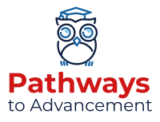The shift to online and hybrid education has introduced diverse learning formats that cater to different needs and preferences. Among these, asynchronous and synchronous learning stand out for their unique approaches to content delivery and engagement. If you’re exploring these options in-depth, this article is here to help you navigate the benefits and challenges of each format, ensuring you can make an informed decision that aligns with your learning style and personal goals.
What is Asynchronous Learning?
Asynchronous learning is characterized by its flexibility. In this format, learning materials are accessible at any time, allowing students to set their own schedules. This approach is ideal for students who may have work, family, or other responsibilities that prevent them from adhering to a rigid schedule. Key tools and platforms for asynchronous learning include:
- Recorded Lectures and Video Content: Pre-recorded materials allow students to watch and re-watch content as needed.
- Online Forums and Discussion Boards: These provide a place to ask questions, participate in discussions, and connect with peers at any time.
- Learning Management Systems (LMS): Platforms like Canvas, Blackboard, or Moodle host materials, quizzes, and other resources in a centralized, accessible way.
Pros of Asynchronous Learning:
- Flexibility in accessing materials anytime, anywhere.
- Pacing control that allows students to revisit materials and learn at their speed.
- Ideal for independent learners who excel with minimal structure.
Cons of Asynchronous Learning:
- Limited real-time interaction with instructors and classmates.
- Self-discipline required to stay on track without immediate feedback.
- Potential for isolation, as interaction is primarily through written posts or emails.
What is Synchronous Learning?
In contrast, synchronous learning involves real-time engagement. Students meet at scheduled times to interact with instructors and classmates through live lectures, discussions, and collaborative activities. This format is often closer to traditional classroom learning but conducted online. Common tools include:
- Video Conferencing Tools (e.g., Zoom, Microsoft Teams): Facilitates real-time lectures, Q&A sessions, and group discussions.
- Live Chat and Messaging Platforms: Enables instant communication during classes or group work sessions.
- Virtual Classrooms: Some LMS platforms offer virtual classrooms where students can engage with materials and interact with instructors live.
Pros of Synchronous Learning:
- Real-time feedback and support from instructors and peers.
- Structured schedule that helps keep students accountable.
- Enhanced engagement through active participation and immediate interaction.
Cons of Synchronous Learning:
- Fixed schedules may not suit students with other commitments.
- Limited flexibility in accessing materials at a convenient time.
- Dependence on reliable internet for live sessions, which can be challenging for some learners.
Key Differences Between Asynchronous and Synchronous Learning
Here’s a breakdown of the most important differences between these two formats:
Flexibility vs. Structure
Asynchronous learning offers maximum flexibility, enabling students to manage their time. Synchronous learning, on the other hand, provides more structure, with scheduled sessions that require students to commit to specific times.
Interaction and Collaboration
Synchronous learning allows for real-time discussions and collaboration, ideal for learners who thrive on instant feedback. Asynchronous learning fosters collaboration through forums, but interaction is slower and more reflective.
Learning Pace and Self-Discipline
Asynchronous learning demands a high level of self-motivation and discipline. Synchronous formats provide a structured pace, which can be beneficial for students who need a bit more guidance to stay on track.
Technology and Accessibility
Asynchronous learning generally requires less internet bandwidth and can be accessed on a variety of devices, making it more accessible. Synchronous learning demands stable, high-speed internet and more advanced tech, as live video and chat are essential.
Pros and Cons of Each Learning Format
| Feature | Asynchronous Learning | Synchronous Learning |
| Flexibility | High; access materials anytime | Low; follow set schedule |
| Interaction | Limited, delayed (e.g., discussion boards) | High, immediate (e.g., video calls) |
| Pacing | Self-paced | Instructor-led |
| Self-discipline | Essential | Less required, as sessions are scheduled |
| Accessibility | Access anytime, usually less tech-intensive | Requires high-speed internet, reliable tech |
Asynchronous learning’s flexibility can be freeing but also requires motivation, whereas synchronous learning’s real-time nature aids in engagement but requires adherence to set times.
Asynchronous vs. Synchronous: Which Format Fits Your Goals?
Choosing the right format depends on your goals, learning style, and daily schedule. Consider:
- Career and Academic Goals: If you’re seeking a highly interactive environment to enhance communication skills, synchronous learning might suit you. If you prefer independent research and in-depth analysis, asynchronous learning may align better.
- Time Management and Scheduling Needs: If you have a busy work schedule or other commitments, asynchronous learning offers greater adaptability.
- Learning Style Preferences: Visual and auditory learners may appreciate synchronous sessions with live lectures, while kinesthetic and independent learners might excel with self-paced, hands-on assignments.
Asynchronous Learning Examples
- Coursera, Udacity, and LinkedIn Learning: Offer a wide range of courses in fields like data science, business, and arts, all at your own pace.
- edX MicroMasters Programs: These programs provide high-quality, self-paced content from top universities, such as Harvard or MIT.
Synchronous Learning Examples
- University Hybrid Programs: Many universities, such as Arizona State University, offer synchronous online courses that mirror the traditional classroom experience.
- Language Courses (e.g., Berlitz, Rosetta Stone LIVE): Language learning benefits from real-time interaction, making synchronous formats effective for pronunciation and conversational skills.
Blended and Hybrid Learning Models
Blended or hybrid learning combines asynchronous and synchronous elements, offering flexibility with real-time engagement. This model often includes self-paced study modules complemented by scheduled live sessions, balancing both independence and interactive support.
Advantages of Blended Learning:
- Flexibility with real-time guidance for challenging concepts.
- Increased engagement and reduced isolation through occasional live interactions.
- Programs using this model include Penn State World Campus and University of Central Florida Online, which incorporate hybrid courses that mix recorded lectures with live discussions.
Making the Final Decision: Questions to Ask Yourself
To decide on a format, ask:
- Do I prefer flexibility or structure?
- How important is real-time interaction to my learning process?
- Am I self-motivated, or do I need a structured schedule to stay on track?
- Do I have reliable internet access for synchronous sessions?
- What skills do I hope to gain, and which format aligns best?
Consider exploring sample courses to see which learning environment feels most supportive.
Takeaways
Both asynchronous and synchronous learning formats offer valuable benefits, and the best choice depends on your unique learning style, goals, and lifestyle. Asynchronous learning’s flexibility suits independent learners, while synchronous learning fosters real-time engagement ideal for those who thrive on interaction. Taking the time to evaluate each option and, if possible, testing a sample course will help you make the most informed decision, setting you up for success in your educational journey.



